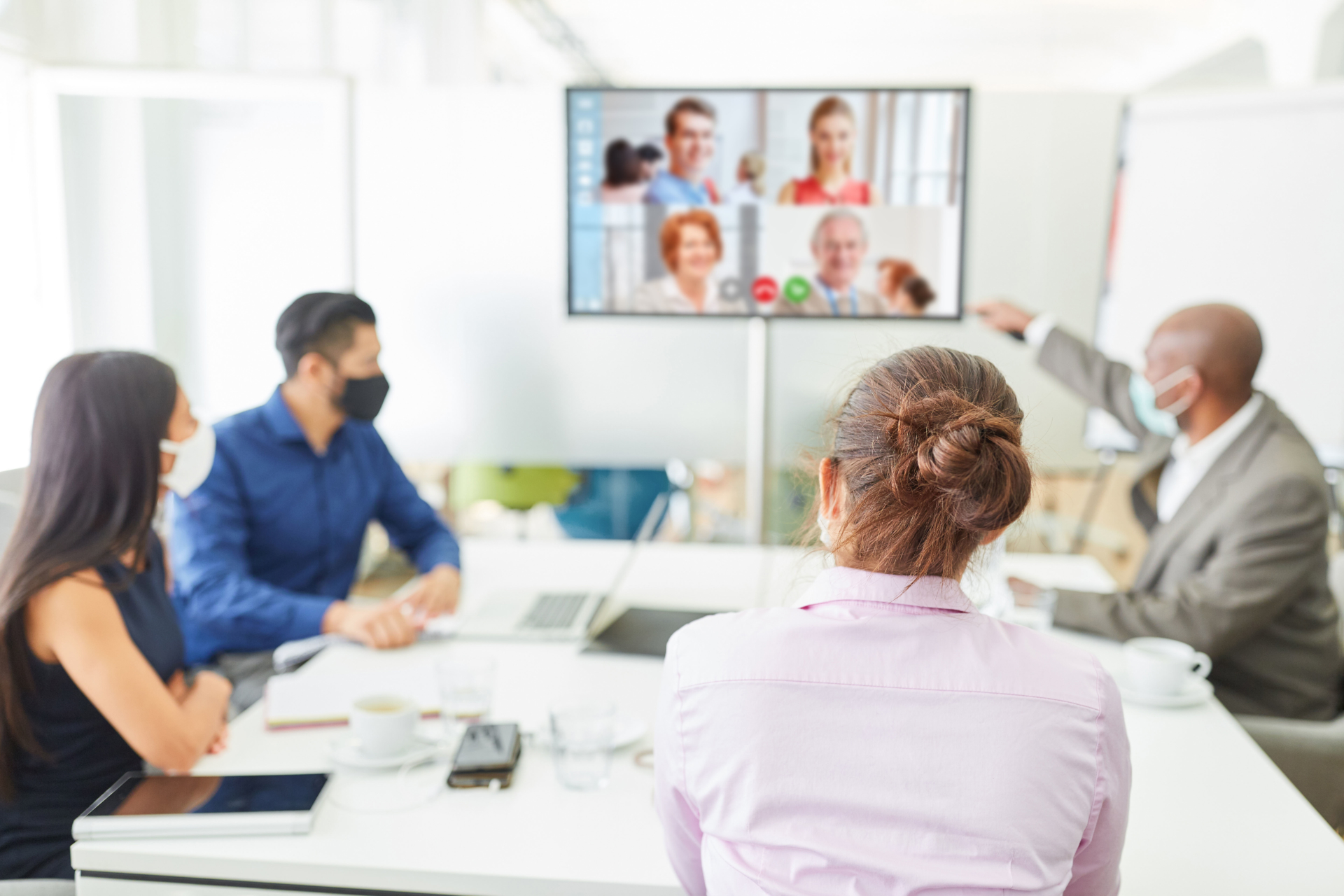Before, we would have dove into the clear, inviting water of face-to-face meetings with little to no hesitation — but since the pandemic, we’ve been more hesitant to even dip our toe in the somewhat calm waters. In January of 2020, walking into a meeting with more than 10 people was normal. Hosting large events with many people — hundreds or thousands of people — was part of meeting planners’ jobs — until everything changed.
No one could have predicted how much COVID-19 would impact everyday life and present difficult challenges for many industries, including restaurants, tourism, healthcare and business — all of which will look different moving forward. At some point, COVID-19 will subside and life will return to normal. But what will that new normal be and what will face-to-face meetings look like in the future?
Certain uncertainty
Julie Wong, CMP, owner and president of The Event Concierge says, “It’s hard to say because we haven’t had the opportunity to plan a meeting, but there has been discussions of instead of having one session where you double up, we break it up into two sessions. So instead of 500 in one event, there are 250 in one and 250 in the second one.”
In a post-COVID world, Wong says as larger meetings take time to build back up, there will be a mix of face-to-face and virtual meetings.
“We almost need a good, better and best option as a whole when it comes to this crazy time and how we are needing to adjust, but still live properly,” she says.
Other precautions include more sanitizing stations and social distancing, as well as increased staffing levels with larger meetings or events so those events will have one serving crew and one cleaning crew, so there’s no cross contaminating.
Technological times
Something many industries weren’t prepared for: reliance and use of technology.
“Technology got caught with its pants down, it wasn’t ready,” Wong says.
Zoom, IM chat, emails and conference calls have all become critical forms of communication when working remotely.
“Before, it was so cut-throat, but there is more patience with each other because there’s a better understanding, which has provided more togetherness,” Wong says.
However, the extreme use of technology during this pandemic has brought more compassion and understanding between colleagues, managers and supervisors as more industries have adapted to working remotely.
According to research conducted by the Society for Human Resource Management (SHRM)’s COVID-19 Business Index, 64 percent of U.S. employees are currently working from home and 60 percent of U.S. employees have switched to remote work because of the COVID-19 pandemic.
Melanie Volkers, president of the Meeting Professionals International (MPI) Arizona Sunbelt Chapter says, “We truly can’t even look at post-COVID too much because things are constantly changing and evolving, so we have to look more at during and every day.”
Adjusting to the times
One thing the tourism industry has had to adjust is its food and beverage offerings and service; group meals and buffets will cease and hotels will eventually offer an unattended buffet for guests. For example, eliminating all touchpoints, such as all-day coffee stations. Eventually when things settle down, the mask mandate will likely be required for employees, but not for guests. The food and beverage changes will probably last longer, providing no community food, no buffets for a while, or family style meals.
“Once we come out of this, past this initial crisis, do you have to still remain six feet apart? Probably not, so most likely more like three feet,” Volkers says.
Once familiar and relatively simple tasks for event professionals — like planning or holding a meeting with some preparation and a goal in mind — will now have more factors to consider, such as how many people will be in the meeting, are the decision makers or those who are proposing an idea or program present; are social distancing guidelines able to be implemented, and can technology (such as video or phone conferencing) give other executives and/or employees access to be part of the meeting if they can’t be present?
Zoom — which announced in may that it would open a new research and development center in Phoenix — has been one of the most utilized forms of technology by many companies and organizations. Zoom has enabled people to discuss goals and communicate updates on certain projects or initiatives while working remotely.
“Technology is why we’re still able to meet right now, so meetings don’t have to stop, we just need to adapt and, hopefully, at a fairly fast rate,” Volkers says.
Ability to adapt
Volkers says on multiple occasions she has been thoroughly impressed with the versatility that meeting planners have shown, and how quickly they made the pivot.
“It could have “easily killed us,” she says, “but we adjusted well, quickly and successfully. We don’t have to meet in person to change the world.”
Pam Gilbert, director of sales and marketing at the Fairmont Scottsdale Princess says, “There are several different phases we need to enter before getting to the end and right now, we’re currently in phase one, which is going to continue through the remainder of the year.”
Part of phase one entails the return of meetings, while still being committed to social distancing. While some groups are currently returning to the meeting process, some will begin to regroup in the fall and begin planning for the future.
“There are very strict cleaning protocols right now and will continue as a normality, such as the use of electrostatic sprayers and sanitizing stations placed throughout the premises,” Gilbert says.
For hotels, a huge consideration for event staff is how to safely serve food and beverages while providing an enjoyable experience for guests. Some ways they are planning to do that is by offering plated meals to groups. Plexy shields will be in place and guests won’t be handling food or utensils if there are buffets. Guests will also be required to wear gloves along with social distancing seating.
“Phase two is where the vaccine enters the picture, which is hopefully by the end of the year,” Gilbert says, “because then people can be given more confidence and things won’t be as strict.”
A new normal for face-to-face meetings
As we navigate this challenging time and adjust accordingly as new information becomes available, meeting planners and hospitality professionals will need to continue to innovate and think of ways to deliver an engaging event in a fun way.
“The team is committed to help reinvent the times and reinvent ourselves with the ability to use polling, chats, other virtual components, especially with our ‘Mini-Monies,’” Gilbert says. Mini-Monies is something the Fairmont Scottsdale Princess has created where people can live-stream their weddings virtually, for those who cannot attend in-person during this pandemic.
“The campaign is called, ‘Love is not cancelled’ and is a true testimony to this team’s commitment to reinvent themselves, as well as still providing an amazing opportunity for those who were intended to get married this year, but had to cancel due to COVID,” Gilbert says.
Although the future is uncertain, face-to-face meetings will take place again, they will just look differently than before. Meeting professionals are cautiously optimistic when planning future events and meetings, considering risk factors and guest safety.
We’ll dip our toe in the water before eventually being able to jump in, but it’s going to take a little time to get used to the new waters first, meeting experts agree.




